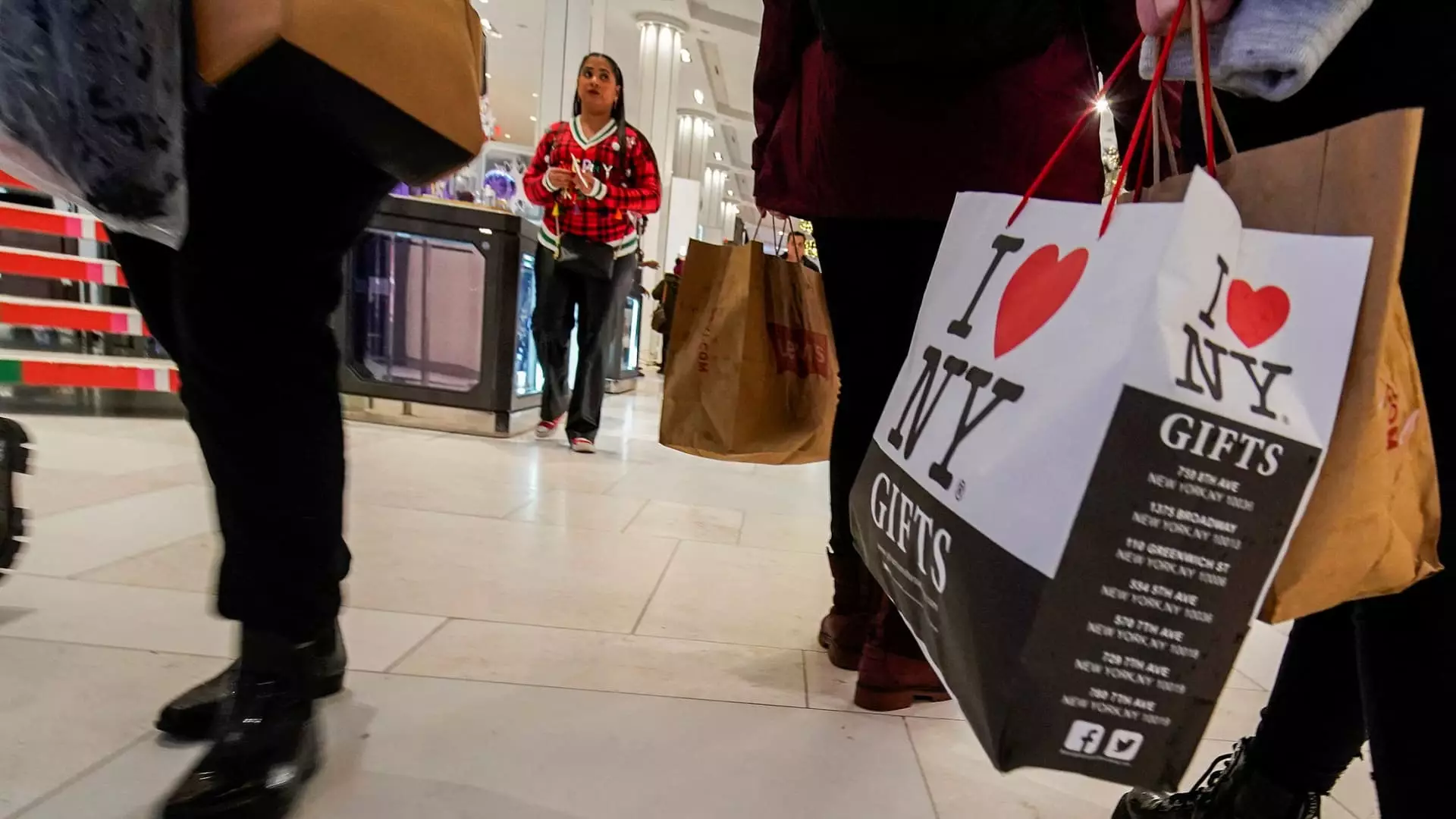As the holiday season approaches, a familiar pattern emerges among American consumers: an eagerness to splurge on gifts. This year, projections from the National Retail Federation indicate that holiday spending could rise dramatically, reaching between $979.5 billion and $989 billion from November 1 to December 31. This anticipated surge highlights a growing trend in consumer behavior that often prioritizes festive generosity over financial prudence. Notably, amidst a backdrop of escalating credit card debt, which has soared past $1.14 trillion, shoppers are seemingly unfazed, intending to spend an average of $1,778—an 8% increase from the previous year, according to Deloitte’s findings.
Despite this year’s expected uptick in holiday spending, the data reveals a concerning reality: a significant portion of consumers—28%—are still grappling with unpaid debts from last year’s festivities. This revelation raises questions about the sustainability of such spending habits, particularly as many consumers turn to credit cards to finance their holiday purchases. A staggering 74% of shoppers plan on utilizing credit cards, while 16% will opt for buy now, pay later services, further complicating an already precarious financial situation. This reliance on external financing mechanisms suggests a disconnect between consumers’ desire to give and their ongoing financial obligations.
Adding to this intricate financial landscape is the meteoric rise of buy now, pay later (BNPL) services, which are becoming increasingly prominent in consumer finance. As highlighted by Adobe’s recent data, this payment option is expected to see record usage, with projected expenditures peaking at $993 million on Cyber Monday alone. While the BNPL model appears appealing—allowing consumers to spread payments without immediate financial burden—it disguises a more insidious reality. Experts, including Howard Dvorkin, a certified public accountant and chairman of Debt.com, caution that these services represent an alternative form of credit that carries similar risks to traditional debt.
One of the critical concerns surrounding BNPL programs is the lack of transparency in tracking payments, leading consumers to lose sight of their total obligations. Research shows that as individuals open multiple BNPL accounts, they increase their risk of overspending and suffering penalties for missed payments, which can include hefty late fees or high-interest rates up to 30%. These pitfalls can unravel the seemingly simple allure of making payments in installments, ultimately placing undue financial strain on consumers.
As the holiday shopping season approaches, it becomes crucial for consumers to adopt a balanced perspective. The festive spirit should not come at the cost of financial health. Individuals must make informed choices about spending, weighing the excitement of gift-giving against their existing financial commitments. The holiday season can indeed be a time of joy, but it is equally important to approach it with financial vigilance to avoid the pitfalls of debt that can detract from the festive experience. By fostering a culture of responsible spending, consumers can ensure that their holiday cheer does not come at the expense of their financial security.

